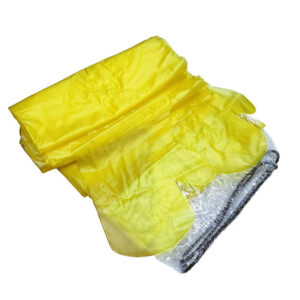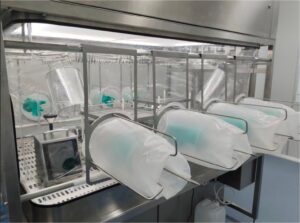The pharmaceutical industry faces an unprecedented challenge: maintaining sterile manufacturing environments while meeting increasingly stringent regulatory requirements. According to FDA inspection data, contamination control failures account for over 40% of pharmaceutical manufacturing violations, directly impacting product quality and patient safety. These failures often stem from inadequate or improperly configured cleanroom equipment systems.
The consequences of insufficient contamination control extend far beyond regulatory citations. Product recalls due to sterility breaches can cost pharmaceutical companies millions in lost revenue, damaged reputation, and legal liability. Manufacturing delays from environmental monitoring failures disrupt supply chains and potentially compromise patient access to critical medications.
This comprehensive guide addresses these critical challenges by examining the essential role of pharmaceutical cleanroom equipment in maintaining GMP compliance. You’ll discover the specific equipment categories required for different manufacturing processes, understand how regulatory standards shape equipment selection, and learn practical strategies for implementing effective contamination control systems that protect both product integrity and business operations.
What is Pharmaceutical Cleanroom Equipment and Why is it Essential?
Pharmaceutical cleanroom equipment encompasses specialized systems designed to create, maintain, and monitor controlled environments for drug manufacturing. These systems work together to eliminate particulate contamination, control microbial growth, and ensure consistent environmental conditions throughout the production process.
Core Components of Cleanroom Systems
Modern pharmaceutical cleanroom equipment integrates multiple technologies to achieve comprehensive contamination control. High-efficiency particulate air (HEPA) filtration systems remove particles as small as 0.3 microns with 99.97% efficiency, while ultra-low particulate air (ULPA) filters achieve even higher performance standards for critical applications.
Air handling units maintain precise temperature and humidity control, typically within ±2°C and ±5% relative humidity ranges. These systems process air volumes ranging from 15 to 25 air changes per hour in standard cleanrooms, increasing to 400-600 air changes per hour in unidirectional flow areas.
Environmental Monitoring Integration
Advanced cleanroom equipment incorporates real-time monitoring capabilities that track multiple parameters simultaneously. Particle counters, microbial samplers, and environmental sensors work together to provide continuous validation of cleanroom performance. In our experience working with pharmaceutical manufacturers, integrated monitoring systems reduce compliance documentation time by approximately 60% while improving detection sensitivity.
| Equipment Category | Primary Function | Typical Performance Standard |
|---|---|---|
| HEPA Filtration | Particle Removal | 99.97% at 0.3 microns |
| Air Handling Units | Environmental Control | ±2°C, ±5% RH |
| Monitoring Systems | Real-time Validation | Continuous data logging |
Sterile Processing Applications
YOUTH Clean Tech has observed that pharmaceutical cleanroom equipment applications span the entire drug manufacturing spectrum, from raw material handling to final packaging. Aseptic filling operations require the highest level of environmental control, utilizing Grade A cleanrooms with unidirectional airflow and advanced personnel protection systems.
Why Do Pharmaceutical Operations Need Specialized Equipment?
The unique requirements of pharmaceutical manufacturing demand equipment capabilities that far exceed standard industrial applications. Drug products, particularly sterile formulations, exhibit extreme sensitivity to environmental contaminants that could compromise therapeutic efficacy or patient safety.
Regulatory Compliance Imperatives
GMP regulations mandate specific environmental conditions for pharmaceutical manufacturing areas. The FDA’s Current Good Manufacturing Practice guidelines require pharmaceutical manufacturers to demonstrate consistent environmental control through validated equipment systems. European Medicines Agency guidelines similarly emphasize the critical role of properly designed and maintained cleanroom equipment.
According to industry compliance data, pharmaceutical facilities using properly validated cleanroom equipment systems achieve FDA inspection pass rates exceeding 95%, compared to 78% for facilities with substandard environmental control systems. This difference translates to significant operational advantages and reduced regulatory risk.
Product Quality Protection
Pharmaceutical products face contamination risks from multiple sources, including personnel activities, raw materials, and manufacturing processes themselves. Specialized cleanroom equipment addresses these risks through engineered solutions that create protective barriers and maintain consistent environmental conditions.
Particle contamination poses particular challenges for sterile drug products. Research conducted by the Parenteral Drug Association demonstrates that particle levels exceeding ISO 14644 standards correlate directly with increased sterility test failures and product rejection rates.
Cross-Contamination Prevention
Multi-product pharmaceutical facilities require sophisticated equipment systems to prevent cross-contamination between different drug substances. Containment solutions, including isolator systems and negative pressure rooms, provide physical separation while maintaining necessary environmental conditions for each manufacturing operation.
What are the Key Types of Cleanroom Equipment for Drug Manufacturing?
Drug manufacturing facilities utilize diverse equipment categories, each serving specific functions within the overall contamination control strategy. Understanding these categories helps manufacturers select appropriate systems for their particular applications and compliance requirements.
Filtration and Air Handling Systems
Primary air filtration systems form the foundation of pharmaceutical cleanroom environments. Terminal HEPA filters, typically installed in ceiling grids, provide the final stage of air purification before entering the manufacturing space. These filters undergo regular integrity testing using dioctyl phthalate (DOP) or photometric methods to ensure continued performance.
Fan filter units (FFUs) offer modular approaches to air filtration, particularly suitable for facilities requiring flexible cleanroom configurations. Modern FFUs incorporate variable speed controls and energy-efficient motors that reduce operating costs while maintaining consistent airflow patterns.
Air handling units designed for pharmaceutical applications include specialized features such as steam-in-place sterilization capabilities, validated control systems, and redundant components to prevent system failures during critical manufacturing operations.
Environmental Monitoring Equipment
Continuous monitoring systems provide real-time validation of cleanroom performance, generating the documentation required for regulatory compliance. Particle counters utilizing laser scattering technology detect and count airborne particles across multiple size ranges, typically from 0.3 to 25 microns.
Microbial monitoring equipment includes active air samplers, settle plates, and surface sampling devices that detect viable contamination throughout the manufacturing environment. Modern systems integrate with facility management software to provide automated data collection and trending analysis.
| Monitoring Parameter | Equipment Type | Sampling Frequency |
|---|---|---|
| Airborne Particles | Laser Particle Counter | Continuous/every 6 seconds |
| Viable Microorganisms | Active Air Sampler | 2-4 times per shift |
| Surface Contamination | Contact Plates | Beginning/end of operations |
Containment and Personnel Protection
Biological safety cabinets and isolator systems provide containment for operations involving potent compounds or sterile processing. Class II biological safety cabinets offer personnel and product protection through carefully designed airflow patterns and HEPA filtration.
Isolator technology represents the most advanced approach to contamination control, providing complete physical separation between manufacturing operations and the surrounding environment. These systems achieve sterility assurance levels exceeding traditional cleanroom approaches while reducing personnel exposure risks.
Our analysis of pharmaceutical manufacturing data indicates that facilities implementing advanced containment equipment achieve contamination control performance improvements of 85-90% compared to conventional open cleanroom designs.
How Do GMP Standards Affect Equipment Selection?
Good Manufacturing Practice standards establish specific requirements for pharmaceutical manufacturing equipment, directly influencing design specifications, operational parameters, and validation protocols. Understanding these requirements ensures compliance and optimal equipment performance.
Design Qualification Requirements
GMP pharmaceutical equipment must undergo comprehensive design qualification (DQ) processes that demonstrate suitability for intended applications. This includes material compatibility assessments, cleanability evaluations, and contamination control effectiveness verification.
Equipment surfaces in pharmaceutical applications require easy cleaning and sanitization capabilities. Stainless steel construction with electropolished finishes represents the industry standard for product-contact surfaces, providing corrosion resistance and facilitating effective cleaning protocols.
Validation protocols must demonstrate consistent equipment performance over time, including worst-case operating conditions and potential failure modes. Installation qualification (IQ) and operational qualification (OQ) protocols verify proper installation and functional performance, while performance qualification (PQ) confirms sustained performance under actual manufacturing conditions.
Documentation and Traceability
GMP compliance requires comprehensive documentation of equipment performance, maintenance activities, and any deviations from standard operating parameters. Modern cleanroom equipment incorporates electronic data logging capabilities that automatically generate compliance documentation while reducing manual record-keeping requirements.
As noted by pharmaceutical quality assurance experts, electronic documentation systems improve data integrity while reducing the administrative burden associated with regulatory compliance. These systems typically include audit trails, electronic signatures, and automated report generation capabilities.
Calibration and Maintenance Standards
Regulatory authorities expect pharmaceutical manufacturers to demonstrate consistent equipment performance through regular calibration and preventive maintenance programs. Sterile processing equipment requires particularly rigorous maintenance protocols to ensure continued contamination control effectiveness.
Critical instruments such as particle counters, airflow measuring devices, and environmental monitoring sensors require calibration against NIST-traceable standards. Calibration frequencies vary by instrument type and criticality, ranging from monthly to annual intervals depending on manufacturer recommendations and regulatory requirements.
What Challenges Do Manufacturers Face When Implementing Cleanroom Equipment?
Implementing pharmaceutical cleanroom equipment presents multiple technical, operational, and financial challenges that require careful planning and expert guidance. Understanding these challenges helps manufacturers develop realistic implementation timelines and budget requirements.
Integration Complexity
Modern pharmaceutical facilities utilize interconnected equipment systems that must function seamlessly together while maintaining individual performance specifications. Drug manufacturing equipment integration requires careful coordination between air handling systems, environmental monitoring equipment, and process machinery.
System integration challenges often arise from incompatible communication protocols, conflicting operational requirements, and space constraints within existing facilities. Successful integration typically requires specialized engineering expertise and comprehensive testing protocols to verify system-wide performance.
In our experience, facilities that engage integration specialists during the design phase achieve 40% faster commissioning times and 25% fewer post-installation modifications compared to those attempting integration without specialized support.
Validation and Compliance Costs
Equipment validation represents a significant portion of cleanroom implementation costs, often accounting for 20-30% of total project budgets. Validation protocols must demonstrate equipment performance under all anticipated operating conditions while generating documentation suitable for regulatory inspection.
The complexity of validation requirements has increased substantially in recent years, reflecting regulatory authorities’ enhanced focus on data integrity and process understanding. Modern validation approaches emphasize risk-based assessments that prioritize critical parameters while streamlining documentation requirements for lower-risk systems.
Operational Staff Training
Pharmaceutical cleanroom equipment requires specialized operational knowledge that extends beyond basic equipment operation to include contamination control principles, regulatory requirements, and troubleshooting procedures. Staff training programs must address both technical competencies and GMP compliance requirements.
Industry data suggests that comprehensive training programs reduce equipment-related deviations by approximately 60% while improving overall operational efficiency. Training effectiveness depends on hands-on experience with actual equipment systems rather than theoretical classroom instruction alone.
| Challenge Category | Typical Impact | Mitigation Strategy |
|---|---|---|
| Integration Complexity | 20-40% schedule delays | Early specialist engagement |
| Validation Costs | 20-30% of project budget | Risk-based validation approach |
| Staff Training | 60% reduction in deviations | Hands-on practical training |
How to Select the Right Pharmaceutical Cleanroom Equipment Supplier
Supplier selection significantly impacts project success, long-term operational costs, and regulatory compliance outcomes. Evaluating potential suppliers requires assessment of technical capabilities, regulatory experience, and post-installation support services.
Technical Expertise and Industry Experience
Leading cleanroom equipment suppliers demonstrate deep understanding of pharmaceutical manufacturing requirements through documented project experience and technical certifications. Look for suppliers with specific expertise in your manufacturing processes, whether sterile drug production, solid dosage manufacturing, or specialized applications like cytotoxic drug handling.
Supplier technical capabilities should include in-house engineering resources, comprehensive testing facilities, and established quality management systems. ISO 9001 certification represents a minimum requirement, while ISO 14644 expertise indicates specialized cleanroom knowledge.
Regulatory Compliance Support
Effective suppliers provide comprehensive regulatory support throughout the equipment lifecycle, from initial design through operational qualification and ongoing maintenance. This includes assistance with validation protocol development, regulatory submission preparation, and inspection readiness support.
According to pharmaceutical quality professionals, suppliers with strong regulatory expertise reduce validation timelines by 30-40% while improving documentation quality and regulatory acceptance rates. This support proves particularly valuable for manufacturers with limited internal regulatory resources.
Long-term Partnership Capabilities
Cleanroom equipment represents a long-term investment requiring ongoing support for maintenance, upgrades, and regulatory changes. Evaluate suppliers based on their ability to provide sustained support throughout the equipment lifecycle, including spare parts availability, technical service capabilities, and upgrade pathways.
Consider suppliers’ financial stability and market position to ensure continued support availability. Established suppliers with strong market positions typically offer more reliable long-term partnerships compared to smaller organizations with limited resources.
Our research indicates that manufacturers partnering with comprehensive cleanroom equipment suppliers achieve 25% lower total cost of ownership through improved equipment reliability, reduced maintenance requirements, and enhanced operational efficiency.
Conclusion
Pharmaceutical cleanroom equipment serves as the cornerstone of compliant drug manufacturing, providing the contamination control capabilities essential for product quality and patient safety. The integration of advanced filtration systems, environmental monitoring equipment, and containment technologies creates comprehensive protection against contamination risks while supporting regulatory compliance objectives.
Key insights from this analysis emphasize the critical importance of proper equipment selection, validation, and ongoing maintenance in achieving sustainable contamination control performance. Pharmaceutical equipment investments represent long-term commitments that require careful evaluation of technical capabilities, regulatory requirements, and operational constraints.
Moving forward, manufacturers should prioritize risk-based approaches to equipment selection that balance performance requirements with cost considerations. Emerging technologies such as advanced monitoring systems, predictive maintenance capabilities, and integrated automation platforms offer opportunities to enhance contamination control effectiveness while reducing operational costs.
The pharmaceutical industry’s continued evolution toward personalized medicines and advanced therapeutic modalities will drive demand for increasingly sophisticated cleanroom equipment solutions. Manufacturers who invest in adaptable, scalable equipment platforms will be best positioned to meet future manufacturing challenges while maintaining current compliance standards.
For manufacturers ready to enhance their contamination control capabilities, partnering with experienced suppliers who understand both technical requirements and regulatory expectations represents the most effective path forward. Consider your specific manufacturing requirements, evaluate potential suppliers comprehensively, and develop implementation strategies that prioritize both immediate needs and long-term operational success.
Frequently Asked Questions
Q: What are GMP standards in pharmaceutical cleanrooms?
A: GMP, or Good Manufacturing Practice, standards in pharmaceutical cleanrooms are guidelines that ensure the production environment maintains high levels of cleanliness and quality. These standards are crucial for preventing contamination and ensuring product safety. They cover aspects such as air quality, personnel hygiene, and equipment maintenance, all aimed at complying with strict regulatory requirements.
Q: What are the key differences between GMP and regular cleanrooms?
A: GMP cleanrooms differ from regular cleanrooms in their strict adherence to regulatory standards. GMP facilities are designed to meet specific guidelines for pharmaceutical production, including precise air quality control, regular monitoring of microbiological and particle levels, and the use of specialized entry systems like airlocks. Regular cleanrooms may have less stringent requirements depending on their intended use.
Q: What are the essential components of GMP cleanroom design?
A: Essential components of a GMP cleanroom include:
- Airlocks: These are used to control entry and exit, minimizing contamination risks.
- Pass-through Cabinets: For transferring materials between areas of different cleanliness levels.
- Monitoring Systems: To track particle and microbiological levels.
- Pressure Differentials: To maintain a clean environment by ensuring air flows from cleaner to less clean areas.
Q: How do GMP standards impact the choice of pharmaceutical cleanroom equipment?
A: GMP standards significantly influence the selection of cleanroom equipment. Equipment must be chosen based on its ability to maintain the required cleanliness levels and comply with guidelines such as those outlined in EU GMP Annex 1. This includes ensuring that equipment is easily cleaned, minimizes particle generation, and does not interfere with the cleanroom’s air quality control systems.
Q: What are the primary classifications of cleanrooms in pharmaceutical GMP environments?
A: In pharmaceutical GMP environments, cleanrooms are typically classified from Grade A to Grade D, with Grade A being the cleanest. This classification is equivalent to ISO Class 5 for Grade A and progresses to ISO Class 8 for Grade D. Each grade has specific requirements for air cleanliness, pressure differentials, and operational practices to ensure the right level of contamination control.
Q: How often should GMP cleanrooms be monitored and maintained?
A: GMP cleanrooms should be regularly monitored to ensure compliance with established standards. This includes frequent checks on air quality, temperature, and humidity levels, as well as regular maintenance of equipment to prevent contamination. Additionally, personnel should undergo regular training to ensure adherence to GMP guidelines.
External Resources
What Are GMP Standards for Cleanrooms? – Angstrom Technology – This article explains Good Manufacturing Practices (GMP) requirements specifically for cleanrooms and highlights their importance for pharmaceutical manufacturing environments.
Building a GMP Facility: 8 GMP Cleanroom Requirements | MECART – A detailed guide outlining eight critical requirements for GMP-compliant cleanroom facilities in the pharmaceutical sector, including airlocks and contamination controls.
Cleanroom Requirements for Pharmaceuticals: A Short Guide – Provides a concise overview of classification, design, and essential requirements for pharmaceutical cleanrooms according to GMP standards.
Current Good Manufacturing Practice (CGMP) Regulations – FDA – The official FDA resource presenting current Good Manufacturing Practice regulations for pharmaceutical manufacturing, including facility and equipment controls.
A Comprehensive Guide to Cleanroom Classification Pharma Guidelines – Explores cleanroom classifications, ISO standards, and GMP guidelines crucial for pharmaceutical safety and contamination prevention.
Pharmaceutical Cleanroom Design & GMP Standards | Terra Universal – Offers in-depth insights into pharmaceutical cleanroom design strategies and GMP compliance, with practical guidance for equipment selection and room layout.
Related Contents:
- GMP Compliant Cleanroom Equipment | FDA Requirements Guide
- Validating Environmental Monitoring in Isolators
- Understanding Cleanroom Equipment Standards and Requirements
- Cleanroom Equipment Types | Classification | Selection Guide
- FDA Approved Cleanroom Equipment | Regulatory Documentation
- ISO 14644 Cleanroom Equipment Standards | Compliance Guide
- Environmental Monitoring in Sterility Test Isolators
- HEPA Housing Boxes in Pharmaceutical Manufacturing: Uses
- BIBO System Validation: Regulatory Requirements




























